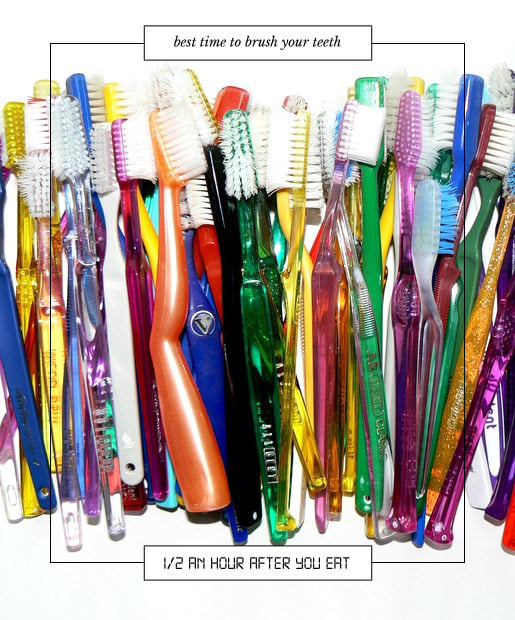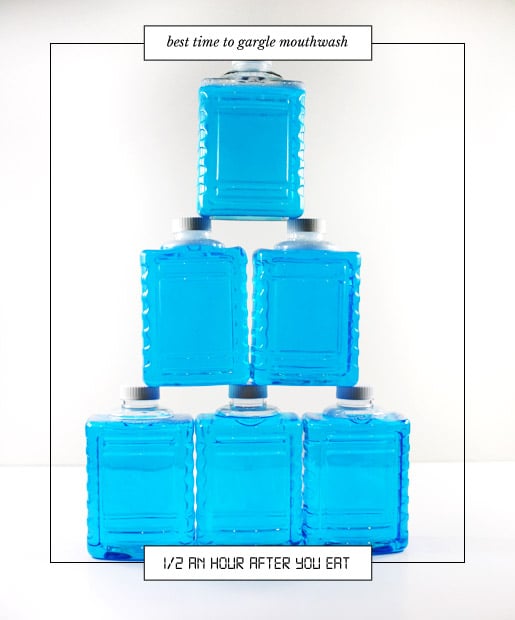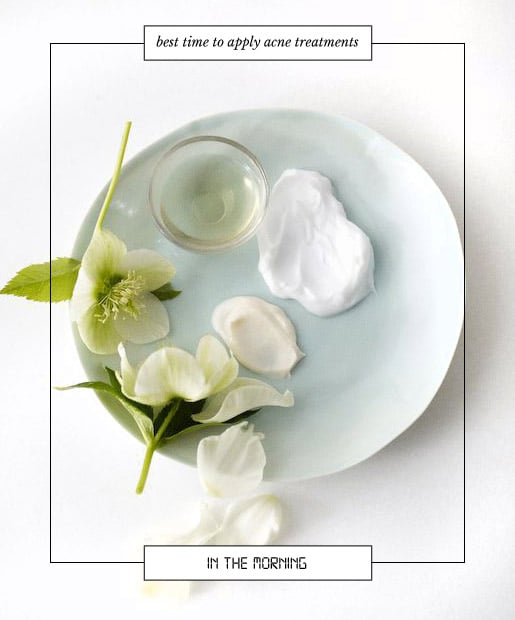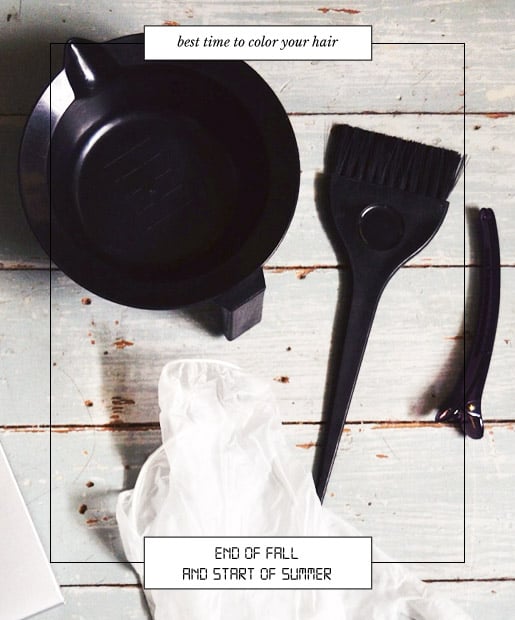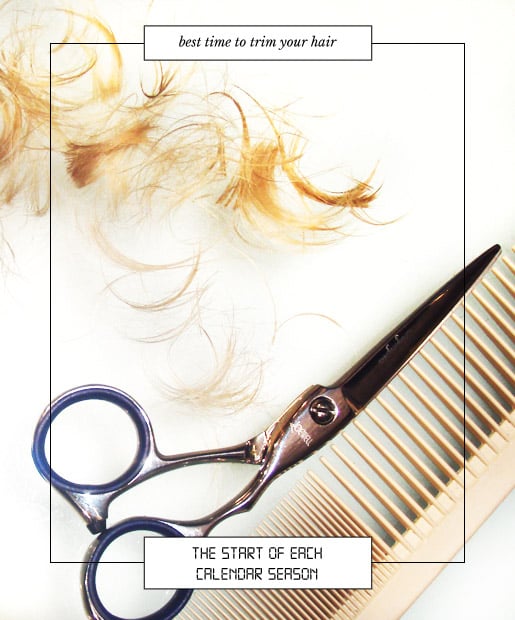When: Half an hour after you eat
Why: Seems pretty obvious: You'd want to brush right after you bite into a burger or down extra garlic-y guac, right? Wrong. "You shouldn't brush directly after eating," says cosmetic dentist Dr. Timothy Chase, practicing partner at Smiles NY. "After you eat, the enamel coating of your teeth is in a weakened state due to the high acid content of food and the different enzymes your body releases in saliva to start the digestive process." Instead of heading immediately to the sink, which further strips your teeth of enamel, Chase recommends finishing a meal with a glass of water and waiting at least 30 minutes to allow the enamel to return to normal.
Why: Seems pretty obvious: You'd want to brush right after you bite into a burger or down extra garlic-y guac, right? Wrong. "You shouldn't brush directly after eating," says cosmetic dentist Dr. Timothy Chase, practicing partner at Smiles NY. "After you eat, the enamel coating of your teeth is in a weakened state due to the high acid content of food and the different enzymes your body releases in saliva to start the digestive process." Instead of heading immediately to the sink, which further strips your teeth of enamel, Chase recommends finishing a meal with a glass of water and waiting at least 30 minutes to allow the enamel to return to normal.
When: After you've waited half an hour to brush your teeth
Why: Reaching for some mouthwash in an attempt to freshen your breath as you wait for your enamel to relax? Not so fast. "When the enamel on your teeth is stripped and demineralized after eating, your teeth are also more susceptible to staining," Dr. Chase says. In this case, mouthwash can be more foe than friend. "If your mouthwash is tinted, put off gargling more than half an hour after you've eaten," Chase recommends.
Why: Reaching for some mouthwash in an attempt to freshen your breath as you wait for your enamel to relax? Not so fast. "When the enamel on your teeth is stripped and demineralized after eating, your teeth are also more susceptible to staining," Dr. Chase says. In this case, mouthwash can be more foe than friend. "If your mouthwash is tinted, put off gargling more than half an hour after you've eaten," Chase recommends.
When: In the morning, right after you wake up
Why: According to Downie, the sebum (a.k.a. oil) level in your skin is at its lowest during the night, and at its highest in the morning. Thus, acne-fighting treatments are more effective when you apply them first thing in the morning when your skin is oiliest. However, Downie notes that while your skin's sebum level is higher during the day, skin cells turn over more frequently at night. If you suffer from moderate to severe acne, she advises applying treatments twice a day, morning and night, to take advantage of these daily changes that occur in your skin.
Why: According to Downie, the sebum (a.k.a. oil) level in your skin is at its lowest during the night, and at its highest in the morning. Thus, acne-fighting treatments are more effective when you apply them first thing in the morning when your skin is oiliest. However, Downie notes that while your skin's sebum level is higher during the day, skin cells turn over more frequently at night. If you suffer from moderate to severe acne, she advises applying treatments twice a day, morning and night, to take advantage of these daily changes that occur in your skin.
When: At the end of fall or the start of summer
Why: If you want to switch up your hair color, Jenny Balding, Cutler/Redken styling and grooming expert, suggests using the outside elements to your advantage. "If you are going darker or choosing a reddish color, dyeing your hair in the fall and winter is more ideal -- the sun won't fade your hair like the summer months will. If you're looking to go lighter, do so in the summer, as the sun may lighten up the hair anyway."
Why: If you want to switch up your hair color, Jenny Balding, Cutler/Redken styling and grooming expert, suggests using the outside elements to your advantage. "If you are going darker or choosing a reddish color, dyeing your hair in the fall and winter is more ideal -- the sun won't fade your hair like the summer months will. If you're looking to go lighter, do so in the summer, as the sun may lighten up the hair anyway."
When: At the start of each season
Why: If you live in an area where weather conditions are relatively extreme in the winter and summer (hint: not Southern California), Balding says it's especially important to schedule routine trims at the start of each season. "Your hair gets drier during colder seasons, so a trim just before the winter will prevent split ends from doing worse damage." Likewise, a trim just before summer will get rid of split ends before the hair gets hit with damage from the sun and salt or chlorinated pool water, says Balding. This scheduling will also get you into the habit of getting regular trims for healthier hair year-round.
Why: If you live in an area where weather conditions are relatively extreme in the winter and summer (hint: not Southern California), Balding says it's especially important to schedule routine trims at the start of each season. "Your hair gets drier during colder seasons, so a trim just before the winter will prevent split ends from doing worse damage." Likewise, a trim just before summer will get rid of split ends before the hair gets hit with damage from the sun and salt or chlorinated pool water, says Balding. This scheduling will also get you into the habit of getting regular trims for healthier hair year-round.



